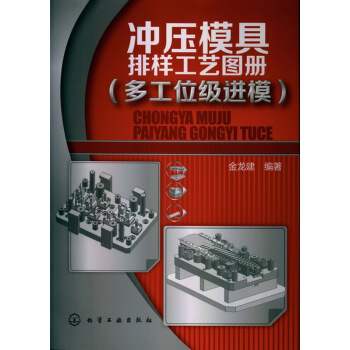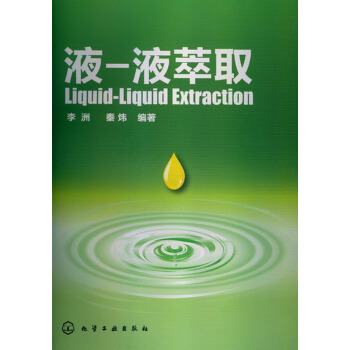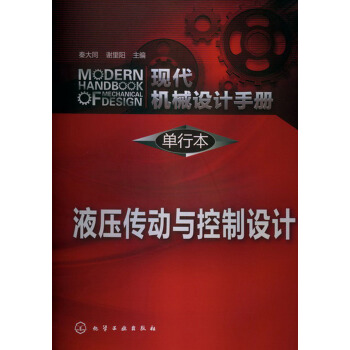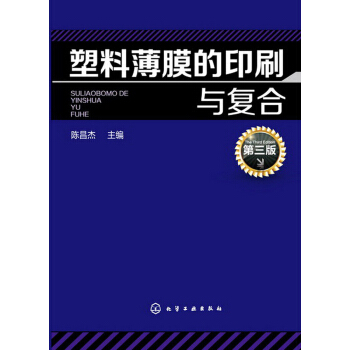![形状记忆聚合物及其多功能复合材料(导读版) [Shape-Memory Polymers and Multifunctional Composites]](https://pic.tinynews.org/10944507/5398fcdbN3116eb42.jpg)

具体描述
内容简介
本书全面综述了形状记忆聚合物(SMPs)及其复合材料的基本概念、类型、结构。此外,进一步着重介绍了形状记忆聚合物在航天、织物、生物医药等相关领域的应用。通过特征鲜明的科学或工业事例,阐述了形状记忆聚合物及其复合材料中的科学、加工和技术问题。本书共12章,可以分为三部分。第一部分包括第1章,主要对形状记忆聚合物的基本概念、结构及应用给出了概述。第二部分包括中间6章,主要介绍了形状记忆聚合物及其复合材料的结构分类、电学和热力学特性以及其形状记忆效应等。第三部分包括最后5章,主要阐述了形状记忆聚合物及其复合材料的潜在应用。
作者简介
朱辉,1975年5月生,俄罗斯族,新疆维吾尔自治区塔城市人。1995年至今在新疆塔城地区中级人民法院工作,现任新疆塔城地区中级人民法院审判委员会委员、民事审判第一庭庭长、四级高级法官。2004年获兰州大学法律硕士;2011年获中南财经政法大学法学博士。在《法律适用》,《法学杂志》、《人民法院报》、《新疆法学》等刊物上发表学术论文多篇。目录
前言编辑
编者
1 形状记忆聚合物的综述 Marc Behl and Andreas Lendlein
2 形状记忆聚合物的结构分类 Hong-Yan Jiang and Annette M.Schmidt
3 热力学行为和建模方法 Hang Jerry Qi and Martin L.Dunn
4 形状记忆聚合物(二/三-段) 的热力学特性和建模方法 Karl Kratz,Wolfgang Wangermaier,Matthias Heuchel,and Andreas Lendlein
5 掺杂炭黑的PU形状记忆聚合物的电、热力学及形状记忆性能 Wei Min Huang and Bin Yang
6 多功能形状记忆聚合物及其驱动方法 Jinsong Leng,Haibao Lu and Shanyi Du
7 形状记忆聚合物复合材料 Jinsong Leng,Xin Lan and Shanyi Du
8 形状记忆聚合物在航天领域的应用 Yanju Liu and Jinsong Leng
9 形状记忆聚合物泡沫及其应用 Witold M.Sokolowski
10 形状记忆聚合物纺织品 Jinlian Hu
11 形状记忆聚合物在生物医药领域的应用 Witold M.Sokolowski and Jinsong Leng
12 形状记忆聚合物的崭新应用及未来 Wei Min Huang
索引
精彩书摘
Overview of Shape-Memory PolymersMarc Behl and Andreas Lendlein*
Center for Biomaterial Development, Institute for Polymer
Research, GKSS Research Center, Teltow, Germany
CONTENTS
1.1 Introduction ....................................................................................................
1
1.2 Definition of Actively Moving Polymers ....................................................
2
1.3 Shape-Memory Polymer Architectures ......................................................
3
1.3.1
Thermally Induced Dual-Shape Effect ...........................................
4
1.3.1.1
Thermoplastic Shape-Memory Polymers ........................
4
1.3.1.2
Covalently Cross-Linked Shape-Memory
Polymers ...............................................................................6
1.3.2
Indirect Triggering of Thermally Induced Dual-Shape
Effect ....................................................................................................8
1.4 Light-Induced Dual-Shape Effect .............................................................. 11
1.5 Triple-Shape Polymers ................................................................................12
1.6 Outlook .......................................................................................................... 14
References ...............................................................................................................15
1.1 Introduction
The ability of polymers to respond to external stimuli such as heat or light is of
high scientific and technological significance. Their stimuli-sensitive behavior
enables such materials to change certain of their macroscopic properties such
as shape, color, or refractive index when controlled by an external signal. The
implementation of the capability to actively move into polymers has attracted
the interest of researchers, especially in the last few years, and has been
achieved in polymers as well as in gels. Sensitivity to heat, light, magnetic
fields, and ion strength or pH value was also realized in gels [1]. In nonswollen polymers, active movement is stimulated by exposure to heat or light and
could also be designed as a complex movement with more than two shapes.
* To whom correspondence should be addressed. E-mail: andreas.lendlein@gkss.de
Besides their scientifi c significance, such materials have a high innovation
potential and can be found, e.g., in smart fabrics [2?4], heat-shrinkable tubes
for electronics or films for packaging [5], self-deployable sun sails in space-
crafts [6], self-disassembling mobile phones [7], intelligent medical devices [8],
and implants for minimally invasive surgery [9?11]. These are only examples
and cover only a small region of potential applications. Actively moving polymers may even reshape the design of products [12]. In this chapter, different classes of actively moving materials are introduced with an emphasis on
shape-memory polymers. The fundamental principles of the different functions are explained and examples for specific materials are given.
1.2 Definition of Actively Moving Polymers
Actively moving polymers are able to respond to a specific stimulus by changing their shape. In general, two types of functions have to be distinguished:
the shape-memory and the shape-changing capability. In both cases, the
basic molecular architecture is a polymer network while the mechanisms
underlying the active movement differ [13,14]. Both polymer concepts contain either molecular switches or stimuli-sensitive domains. Upon exposure
to a suitable stimulus, the switches are triggered resulting in the movement
of the shaped body.
Most shape-memory polymers are dual-shape materials exhibiting two distinct shapes. They can be deformed from their original shape and temporarily
assume another shape. This temporary shape is maintained until the shaped
body is exposed to an appropriate stimulus. Shape recovery is predefi ned
by a mechanical deformation leading to the temporary shape. So far, shape-
memory polymers induced by heat or light have been reported. Furthermore,
the concept of the thermally induced shape-memory effect has been extended
by indirect actuation, e.g., irradiation with IR-light, application of electrical
current, exposure to alternating magnetic fields, and immersion in water.
Besides exhibiting two distinct shapes, an important characteristic of
shape-memory polymers is the stability of the temporary shape until the
point of time of exposure to the suitable stimulus and the long-term stability
of the (recovered) permanent shape, which stays unchanged even when not
exposed to the stimulus anymore. Finally, different temporary shapes, substantially differing in their three-dimensional shape, can be created for the
same permanent shape in subsequent cycles.
In contrast to shape-memory polymers, shape-changing polymers change
their shape gradually, i.e., shrink or bend, as long as they are exposed to
a suitable stimulus. Once the stimulus is terminated, they recover their
original shape. This process of stimulated deformation and recovery can
be repeated several times, while the geometry, i.e., of how a workpiece is
moving, is determined by its original three-dimensional shape as the effect
is based on a phase transition in a liquid crystalline elastomer network. Heat,
light, and electromagnetic fields have been reported as suitable stimuli for
shape-changing polymers.
1.3 Shape-Memory Polymer Architectures
The shape-memory effect is not an intrinsic material property, but occurs
due to the combination of the polymer’s molecular architecture and the
resulting polymer morphology in combination with a tailored processing
and programming technology for the creation of the temporary shape. To
enable the shape-memory effect, a polymer architecture, which consists of
netpoints and molecular switches that are sensitive to an external stimulus,
is required.
The permanent shape in such a polymer network is determined by the net-
points that are cross-linked by chain segments (Figure 1.1). Netpoints can
be realized by covalent bonds or intermolecular interactions; hence, they are
either of a chemical or a physical nature. While chemical cross-linking can be
realized by suitable cross-linking chemistry, physical cross-linking requires
a polymer morphology consisting of at least two segregated domains. In
such a morphology, the domains providing the second-highest thermal transition, Ttrans, act as switching domains, and the associated segments of the
multiphase polymers are therefore called “switching segments,” while the
Extension
and
cooling
Heating
Switching segment, relaxed
Netpoint
Ttrans
°C
Ttrans
°C
Ttrans
°C
Switching segment, elongated and fixed
Shape (B)
Shape (A)
Shape (B)
FIGURE 1.1
Molecular mechanism of the thermally induced shape-memory effect. Ttrans is the thermal transition temperature of the switching phase. (Adapted from Lendlein, A. and Kelch, S., Angew.
Chem. Int. Ed., 41(12), 2034, 2002. With permission.)
domains associated-to-the highest thermal transition, Tperm, act as physical
netpoints. The segments forming such hard domains are known as “hard
segments.” These switches must be able to fix the deformed shape temporarily under conditions relevant to the particular application. In addition to
switching domains, they can be realized by functional groups that are able to
reversibly form and cleave covalent cross-links. The thermal transition, Ttrans,
related to the switching domains can be a melting transition (Tm), or a glass
transition (Tg). Accordingly, the temporary shape is fixed by a solidifi cation of
the switching domains by crystallization or vitrification. In suitable polymer
architectures, these switching domains can be formed either by side chains
that are only connected to one netpoint and do not contribute to the overall
elasticity of the polymer, or by chain segments linking two netpoints and
contributing to the overall elastic behavior. In both cases, the temporary stabilization is caused by the aggregation of the switching segments. Recently,
blends of two thermoplastic polymers having shape-memory capability
were presented, in which the segments forming the hard and the switching
domains consisted of two different multiblock copolymers.
Functional groups that are able to reversibly form and cleave covalent
bonds controlled by an external stimulus can be used as molecular switches
providing chemical bonds. The introduction of functional groups that are
able to undergo a photoreversible reaction, e.g., cinnamic acid (CA) groups,
extends the shape-memory technology to light, which acts as a stimulus.
Shape-memory properties are quantified in cyclic stimuli-specifi c mechanical tests [15,16] in which each cycle consists of the programming of the test
specimen and the recovery of its permanent shape. Different test protocols
have been developed for the programming and recovery (see Chapter 3)
from which the shape-memory properties are quantified by determining the
shape-fixity ratio (Rf) for the programming and the shape-recovery ratio (Rr)
for the recovery process. In thermally induced shape-memory polymers, the
determination of the switching temperature, Tsw, characterizing the stress-
free recovery process can be included in the test protocol.
1.3.1 Thermally Induced Dual-Shape Effect
1.3.1.1 Thermoplastic Shape-Memory Polymers
An important group of physically cross-linked shape-memory polymers are
linear-block copolymers. Block copolymers with Ttrans = Tm, and where polyurethanes and polyether-ester are prominent examples for such materials, are
reviewed by Lendlein and Kelch [15]. In polyesterurethanes, oligourethane
segments act as hard segments, while polyester, e.g., poly(ε-caprolactone)
(Tm= 44°C.55°C) forms the switching segment [17?19]. The phase separation
and the domain orientation of poly(ε-caprolactone)-based polyesterurethanes
could be determined by Raman spectroscopy using polarized light [20]. In
polyesterurethanes where poly(hexylene adipate) provides the switching
segment, and a hard segment is formed by the 4,4′-diphenyldiisocyanate and
the 1,4-butanediol, the influence of the Mn of the switching segment as well
as the hard segment content on the shape-memory properties were investigated [21]. The Rf increases with the increasing Mn of the switching segment
but decreases with the increasing hard segment content. At the same time,
the Rr decreases with the increasing Mn of the switching segment and the
increasing hard segment content. Fibers from polyesterurethanes exert significantly higher recovery stress in the fiber axis when compared to the polymer
fi lms [22]. The exchange of the chain extender 1,4-butanediol with ethylenediamine can result in improved values of the Rf as urea-type bonding of the
ethylene diamine can restrict the chain rotation and strengthen the physical
interactions between the polyurethane segments [23]. Additionally, the shape-
memory properties of polyurethanes can be enhanced by the addition of a
second soft segment in small amounts so that segmented polyurethanes are
obtained; e.g., 5 wt% of poly(ethylene glycol) can be added during synthesis to
the poly(tetramethylene glycol) [24]. The addition of N-methyldiethanolamine
as a cationomer in the hard segment of the segmented polyurethanes from
poly(ε-caprolactone), 4,4′-diphenylmethane diisocyanate and 1,4-butanediol,
simultaneously improved the Rf and the Rr. This effect is attributed to an
improved switching segment crystallization [25]. A similar effect was found
in copolyester-based ionomers obtained by the bulk polymerization of adipic acid and mixed monomers of bis(poly(oxyethylene)) sulfonated dimethyl
fumarate and 1,4-butanediol [26]. The storage modulus of the rubbery plateau
was significantly increased with increasing ionomer content and recovery
rates of up to 95% were determined. Melt blending of an elastomeric ionomer
based on the zinc salt of sulfonated poly{ethylene-r-propylene-r-(5-ethylidene2-norbornene)} and low molecular mass fatty acids results in polymer networks in which the nanophase-separated ionomer provides the permanent
network physically cross-linked by the zinc salt, and the fatty acids provide
nanophases, whose melting triggers the shape recovery [27]. Polycarbonate
segments containing polyurethanes were synthesized by the copolymerization of ethylene oxide in the presence of CO2 catalyzed by a polymer-supported bimetallic catalyst, which yields an aliphatic polycarbonate diol. This
macrodiol was further processed by the prepolymer method into a shape-
memory polyurethane [28].
Thermoplastic multiblock copolymers with polydepsipeptide- and poly(εcaprolactone)-segments providing shape-memory capability were synthesized via the coupling of oligodepsipeptide diol and oligo(ε-caprolactone)
diol (PCL-diol) using a racemic mixture of 2,2,4- and 2,4,4-trimethylhexamethylene diisocyanate (TMDI). The multiblock copolymers were developed
for biomedical applications and are supposed to degrade into less harmless
degradation products than polyester-based materials. In the polymer molecules, the PCL block has the function of a switching segment forming the
switching domains, that fix the temporary shape by crystallization [29].
Recently, binary polymer blends from two different multiblock copolymers
with shape-memory capability were presented, whereby the fi rst polymer
component provided the segments forming the hard domains and the second, the segments forming the switching domains [30]. In both multiblock
copolymers, a poly(alkylene adipate) mediator segment was incorporated
to promote their miscibility as the hard segment poly(p-dioxanone) (PPDO)
and the switching segment poly(ε-caprolactone) (PCL) are nonmiscible. All
polymer blends investigated showed excellent shape-memory properties.
The melting point associated with the PCL switching domains Tm, PCL, is
almost independent of the weight ratio of the two blend components. At the
same time, the mechanical properties can be varied systematically by the
blend composition. In this way, a complex synthesis of new materials can
be avoided. This binary blend system providing good biodegradability, a
variability of mechanical properties, and a Tsw around the body temperature
is thus an economically efficient, suitable candidate for diverse biomedical
applications.
1.3.1.2 Covalently Cross-Linked Shape-Memory Polymers
Shape-memory polymer networks providing covalent netpoints can be
obtained by the cross-linking of linear or branched polymers as well as
by (co)polymerization/poly(co)condensation of one or several monomers,
whereby one has to be at least trifunctional. Depending on the synthesis
strategy, cross-links can be created during the synthesis or by postprocessing
methods. Besides cross-linking by radiation (γ-radiation, neutrons, e-beam),
the most common method for chemical cross-linking, after processing, is
the addition of a radical initiator to polymers. An example of this is the
addition of dicumyl peroxide to a semicrystalline polycyclooctene obtained
by ring-opening methathesis polymerization containing unsaturated carbon bonds [31]. Here, the shape-memory effect is triggered by the melting
of crystallites, which can be controlled by the trans-vinylene content. With
increasing cross-linking density, the crystallinity of the material decreases.
A melting temperature of 60°C was determined for pure polycyclooctene
with a 81 wt% trans-vinylene content resulting in a shape recovery of these
materials within 0.7 s at 70°C. The conversion to Ttrans, when temperature is
increased, can be monitored by the addition of a mechanochromic dye based
on oligo(p-phenylene vinylene). Previously formed excimers of the dye are
dissolved at this point and a pronounced change of their adsorption can be
observed [32].
The other synthetic route to obtain polymer networks involves the copolymerization of monofunctional monomers with low molecular weight or
oligomeric bifunctional cross-linkers. In a model system based on a styrene
copolymer cross-linked with divinylbenzene, the influence of the degree of
cross-linking on the thermomechanical properties has been investigated [33].
By increasing the amount of the cross-linker from 0 to 4 wt%, Tg increased
前言/序言
用户评价
这本书的封面设计有一种未来感,仿佛预示着材料科学的无限可能。我一直对那些能够对环境做出“智能”响应的材料充满热情,而形状记忆聚合物无疑是其中的佼佼者。我希望这本书能够为我深入解读,这种“形状记忆”的微观机理究竟是什么?是依赖于分子链的特定构象变化,还是可逆的相变过程?书中是否会详细介绍不同类型的形状记忆聚合物,例如它们是如何通过热、光、电等外部刺激来触发形状恢复的?更让我感到惊喜的是,书中还引入了“多功能复合材料”的概念。这意味着,这些形状记忆聚合物可以与其他材料相结合,从而拥有更加丰富和强大的功能。我热切地希望能够在这本书中找到关于如何将形状记忆聚合物与导电材料、传感材料、甚至生物活性材料进行复合的详细指导,以及这些复合材料在医疗、机器人、航空航天等领域的创新应用。我期待书中能够提供扎实的研究数据和严谨的科学分析,为我的学习和研究提供重要的参考。
评分当我翻开这本书,首先映入眼帘的是序言,作者以一种非常谦逊却又充满热情的笔触,阐述了他对形状记忆聚合物及其复合材料研究的热情和愿景。这让我感觉这不是一本冷冰冰的技术手册,而是一位科学家对未来科技的深邃思考和真诚分享。我一直对材料的“智能”特性非常着迷,而形状记忆效应无疑是智能材料中最具代表性的功能之一。我一直好奇,这种“形状记忆”是如何实现的?是依赖于特定的化学结构,还是某种物理机制?这本书是否能够详细解释这些聚合物的分子设计策略,以及不同类型的形状记忆聚合物(例如热致、光致、溶剂致等)之间的区别和优劣?更让我感兴趣的是“多功能复合材料”的部分。我希望书中能深入探讨如何巧妙地将形状记忆特性与传感、驱动、能量存储、甚至生物相容性等多种功能结合起来。想象一下,一种能够根据生物信号改变形状并释放药物的医用支架,或者是一种能够自主修复微小损伤的结构材料。这些令人兴奋的可能性,我希望在这本书中能够得到具体的阐述和启发。我期待书中能够包含大量的实验数据、性能表征方法以及相关的理论模型,为我的进一步研究提供坚实的基础。同时,我希望作者能够分享一些在材料制备和性能调控方面的实践经验和技术诀窍,这些往往是在学术论文中难以获得的宝贵信息。
评分这本书的目录结构清晰明了,让我能够迅速把握其内容主线。从基础理论的介绍,到各类形状记忆聚合物的详细分类,再到各种功能复合材料的设计与制备,最后落脚于广泛的应用前景,这种循序渐进的编排方式非常适合我这样希望系统学习某一领域知识的读者。我尤其关注书中对于“形状记忆效应”物理化学原理的阐释。我想知道,是什么样的分子结构和链段运动机制,能够赋予聚合物如此奇特的“记忆”能力?是可逆的相变,还是化学键的断裂与重组?书中是否会涉及到一些先进的表征技术,例如差示扫描量热法(DSC)、动态力学分析(DMA)、X射线衍射(XRD)等,来揭示材料的微观结构和性能变化?而“多功能复合材料”的章节,则是我最为期待的部分。我希望书中能够详细介绍如何通过引入不同的填料、基体或者纳米结构,来提升形状记忆聚合物的力学性能、导电性、导热性,甚至实现自修复、传感等功能。例如,如何制备出既能记忆形状又能高效导电的聚合物,以便于制造智能电极或柔性电子器件?书中能否提供一些具体的复合材料设计实例,并分析其性能优势和潜在的挑战?我希望这本书能够激发我将形状记忆聚合物与我的研究方向(如生物医学工程)相结合的灵感,探索更多创新的应用可能性。
评分这本书的开篇就以极具吸引力的方式,将我引入了形状记忆聚合物这个充满魅力的领域。我一直对能够对外部刺激做出响应并恢复原始形态的材料感到着迷,而这正是形状记忆聚合物的核心特性。我希望书中能够详细阐述,这种“形状记忆”的机制究竟是如何在分子水平上实现的?是否存在着不同的驱动机制,例如温度变化、光照、电场,甚至是pH值的改变?书中是否会深入探讨不同种类的形状记忆聚合物,包括它们的分子结构、力学性能、以及在不同条件下实现形状恢复的特点?更让我期待的是,书中还将“多功能复合材料”的概念融入其中。这意味着,这些形状记忆聚合物并非孤立存在,而是可以与其他功能性材料进行巧妙的结合,从而衍生出更多令人惊叹的应用。我希望书中能够提供关于如何将形状记忆聚合物与导电材料、传感材料、生物活性材料等进行复合的详细指导,并探讨这些复合材料在医疗、航空航天、机器人等领域的潜在应用。我特别希望能够看到书中对一些前沿研究成果的深入剖析,以及对未来发展趋势的准确预测。
评分当我看到这本书的书名时,我就知道这正是我一直在寻找的。我对于能够对外部刺激做出反应并恢复到预设形状的材料一直有着极大的兴趣,而“形状记忆聚合物”这个术语本身就充满了神秘感和科技感。我希望这本书能够为我揭示,这些神奇的聚合物究竟是如何做到“记住”形状的?它们的分子结构和内部机制是怎样的?是否存在着多种不同的形状记忆机制,例如基于温度、光、电场或其他物理化学因素?我尤其对书中提到的“多功能复合材料”感到兴奋,这意味着这些材料不仅可以改变形状,还可能同时具备其他令人惊叹的性能。我希望书中能够详细介绍如何通过将形状记忆聚合物与其他功能材料,如纳米粒子、导电聚合物、甚至是生物活性分子进行复合,来赋予材料更广泛的应用潜力。例如,我是否能够在这本书中找到关于制备能够根据生物信号改变形状并释放药物的医用材料的思路?我期待书中能够提供大量的实例、实验数据和深入的分析,帮助我理解这些前沿材料的科学原理、制备方法以及它们在各个领域的广阔应用前景。
评分这本书的封面设计就足够吸引人,那种流线型的、仿佛正在变形的图案,立刻勾起了我对“形状记忆”这个概念的好奇心。我一直对新材料充满热情,尤其是在学术领域,总想找到能够推动技术革新、解决实际问题的突破口。这本书的名字,虽然略显专业,但“形状记忆聚合物”这几个字本身就充满了想象空间。我甚至可以想象到,这些材料是如何在温度、光照或其他刺激下,从一种形状“记忆”并恢复到预设形状的。这不仅仅是材料科学的进步,更可能意味着未来在医疗、航空航天、甚至日常消费品领域会涌现出无数令人惊叹的应用。我特别期待书中能够深入浅出地讲解这些聚合物的工作原理,它们是如何做到“记忆”的?这种记忆是否是永久的?又如何被触发?而且,“多功能复合材料”的加入,更是为这本书增添了无限可能。复合材料意味着将不同材料的优势结合起来,而“多功能”则暗示了这些复合材料不仅具备形状记忆特性,还可能拥有其他令人惊喜的性能,比如导电、导热、自修复、甚至是传感能力。想想看,一个能够根据环境变化改变形状,同时又能感知周围环境的材料,它的应用前景该有多么广阔!这本书能否为我打开一扇全新的科学大门,让我看到这些前所未有的技术可能性,是我最期待的。我希望它不仅仅是枯燥的理论堆砌,而是能够激发我的思考,让我对材料科学的未来充满憧憬。
评分拿到这本书的时候,我第一时间就被其厚重感和印刷质量所吸引。它并非那种轻飘飘的科普读物,而是带着一种严谨和专业的科研气息。作为一名长期关注高分子材料领域的研究者,我深知“形状记忆聚合物”这一分支的复杂性和研究难度。过去,我接触到的相关文献大多是零散的研究论文,缺乏一个系统性的梳理和整合。而这本书的出现,恰恰填补了这一空白。书名中的“导读版”让我感到尤为惊喜,它暗示了这本书并非仅仅是为行业专家量身打造,而是对材料科学初学者或者跨领域的研究者也具有一定的指导意义。我尤其关注它是否能够清晰地解释形状记忆聚合物的宏观现象背后的微观机理,例如分子链的运动、交联网络的结构等。同时,书中对于“多功能复合材料”的论述,也让我充满期待。我希望它能详细介绍如何通过将形状记忆聚合物与其他功能性材料(如纳米粒子、碳纤维、导电聚合物等)复合,来赋予材料更丰富的性能。例如,能否制备出在改变形状的同时还能进行能量收集或信息传输的智能材料?书中的案例分析和实验数据是否足够详实,能否为我提供实际的研究思路和借鉴?我更希望看到的是,作者能够将复杂的科学概念用清晰易懂的语言表达出来,并辅以高质量的图表和示意图,帮助我更直观地理解这些前沿的材料科学知识。
评分这本书的语言风格严谨而不失流畅,即便涉及复杂的科学概念,作者也能将其娓娓道来,让我感觉阅读过程并非枯燥的知识灌输,而更像是一场与行业顶尖专家的思想对话。我一直对材料的“主动响应”特性非常着迷,而形状记忆聚合物正是这一领域的杰出代表。我特别想了解,在宏观形变背后,是否存在着不同尺度的“记忆”机制?例如,是否涉及分子链段的取向、结晶区域的形成,甚至网络结构的改变?书中是否会深入探讨不同外部刺激(如温度、光、电场、磁场、pH值等)对形状记忆效应的影响,以及如何通过材料设计来调控这些刺激的响应阈值和响应速度?“多功能复合材料”的出现,则让这本书的吸引力更上一层楼。我希望书中能够详细阐述,如何通过巧妙的组分设计和制备工艺,将形状记忆聚合物与其他功能材料(例如纳米颗粒、石墨烯、碳纳米管、生物活性分子等)进行有效的复合,从而赋予材料超越单一组分的独特性能。例如,我是否能够在这本书中找到关于制备既能记忆形状又能进行生物降解的材料,用于可植入医疗器械的思路?我期待书中能够提供详实的研究案例,并对不同复合体系的性能优势和局限性进行深入分析,帮助我更清晰地认识到这些智能材料的潜在价值和发展方向。
评分我被这本书的标题所吸引,尤其是“形状记忆聚合物”和“多功能复合材料”这两个词组,立刻勾起了我对智能材料的浓厚兴趣。我一直对那些能够“自我调整”和“适应环境”的材料充满好奇,而形状记忆聚合物正是这一领域的代表。我希望书中能够详细解释,这些聚合物究竟是如何“记忆”并恢复其原始形状的?这种记忆是基于何种物理或化学原理?书中是否会深入探讨不同类型的形状记忆聚合物,例如热致、光致、电致等,并分析它们的特性和应用前景?更令我兴奋的是,本书还将“多功能复合材料”的概念引入。这意味着,这些形状记忆聚合物不仅仅能改变形状,还可能具备其他令人意想不到的功能,比如导电、导热、自修复、传感等。我希望书中能够提供关于如何将形状记忆聚合物与其他功能材料进行复合的详细指导,以及这些复合材料在各个领域的实际应用案例。我期待书中能够包含大量的实验数据、理论分析和图示,帮助我更深入地理解这些前沿材料的科学原理和技术潜力。
评分这本书的装帧设计充满了现代感,封面上抽象的图形似乎在暗示着材料的无限可能,这与我对前沿科技的想象不谋而合。我一直对那些能够“思考”和“行动”的材料充满好奇,而形状记忆聚合物无疑是其中的翘楚。我希望这本书能够为我揭示,这种“形状记忆”究竟是如何在微观层面实现的?是依赖于分子链的特殊排列,还是某种可逆的化学或物理过程?书中是否会详细介绍不同类型的形状记忆聚合物,例如热致、光致、电致等,以及它们各自的特点、优缺点和适用范围?更让我兴奋的是,书中还涵盖了“多功能复合材料”的内容。这意味着,这些形状记忆聚合物不仅仅能改变形状,还可能具备其他令人惊叹的特性。我热切地想知道,如何通过将形状记忆聚合物与导电材料、传感材料、自修复材料等相结合,来创造出更加智能和实用的材料。例如,能否设计出一种材料,在改变形状的同时还能监测周围环境的变化,甚至对损伤进行自我修复?我期待书中能够包含具体的实验数据、性能测试方法以及一些具有启发性的应用案例,为我提供宝贵的科研灵感和技术指导。
评分不看不知道,看了长见识。
评分介绍的很仔细,适合相关方面的看
评分不看不知道,看了长见识。
评分东西不错,适合相关方向的人使用
评分形状记忆聚合物及其多功能复合材料(导读版) 挺好的
评分形状记忆聚合物及其多功能复合材料(导读版) 挺好的
评分就是快递真不给力,10几天才送到手里
评分介绍的很仔细,适合相关方面的看
评分就是快递真不给力,10几天才送到手里
相关图书
本站所有内容均为互联网搜索引擎提供的公开搜索信息,本站不存储任何数据与内容,任何内容与数据均与本站无关,如有需要请联系相关搜索引擎包括但不限于百度,google,bing,sogou 等
© 2025 book.idnshop.cc All Rights Reserved. 静思书屋 版权所有

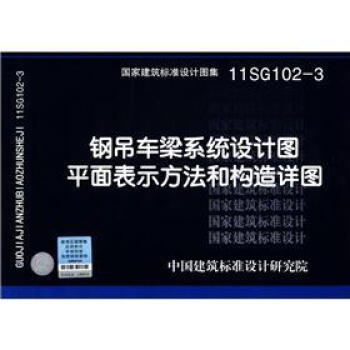


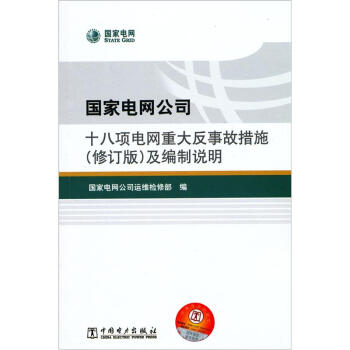



![食品分析(第三版) [Food Analysis] pdf epub mobi 电子书 下载](https://pic.tinynews.org/11077245/rBEHZ1BIerAIAAAAAADey9q0QecAABElAJ9_asAAN7j642.jpg)
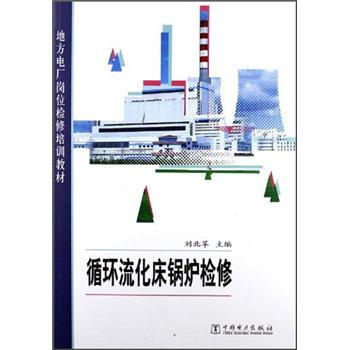


![材料科学与工程学科系列教材:材料强韧学基础 [Strengthening and Toughening of Materials] pdf epub mobi 电子书 下载](https://pic.tinynews.org/11147444/rBEHaVDdA9gIAAAAAACaXIbwuS0AADcowIyiLwAAJp0583.jpg)
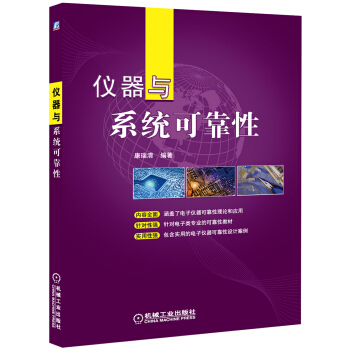
![AIAA航空天航技术丛书·飞机和旋翼机系统辨识:工程方法和飞行试验案例 [Aircraft and Rotorcraft System Ldentification:Engineering Methods whth Flight-Test Examples] pdf epub mobi 电子书 下载](https://pic.tinynews.org/11158582/rBEQWFD_S1wIAAAAAAj0NSlEyDwAAAEwgKduIcACPRN497.jpg)
